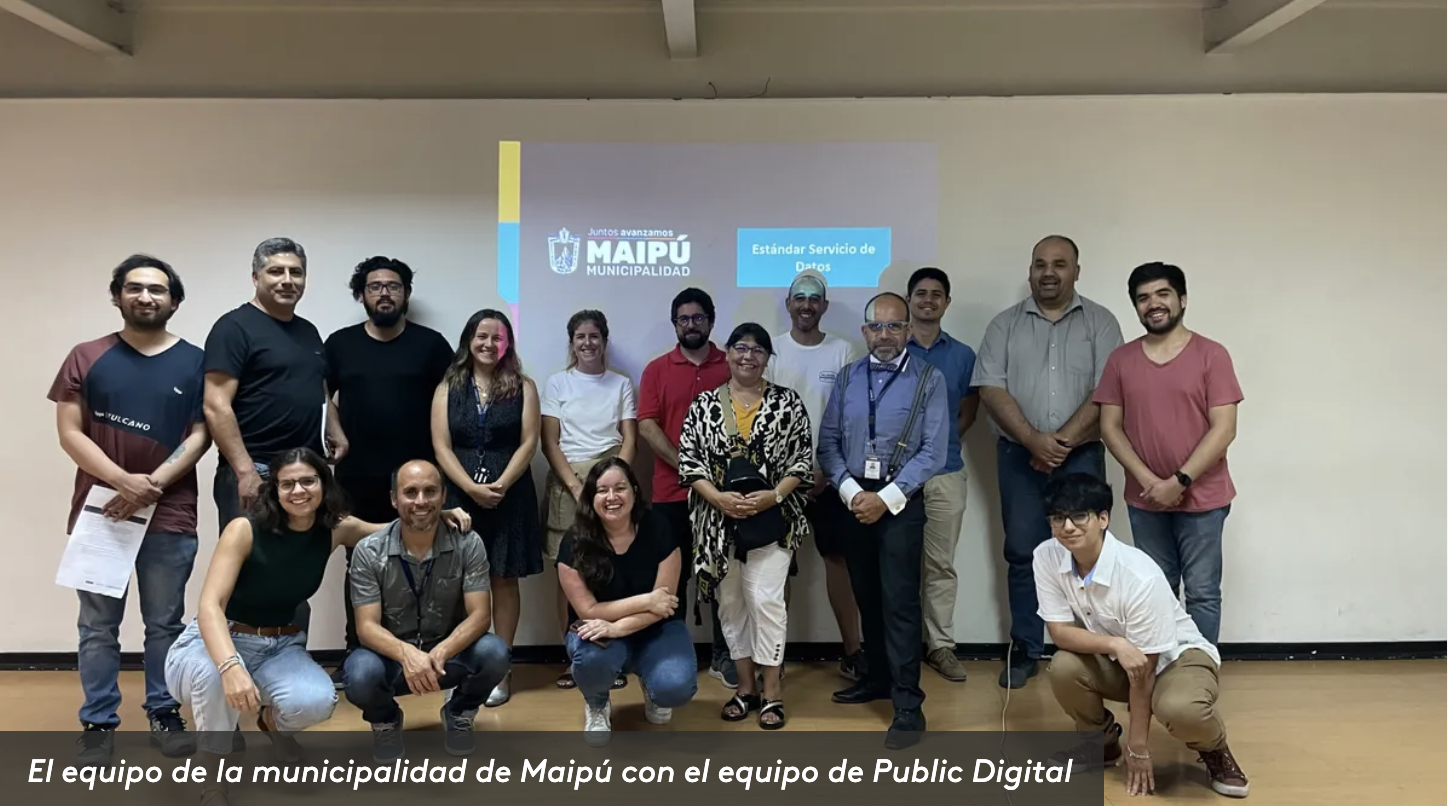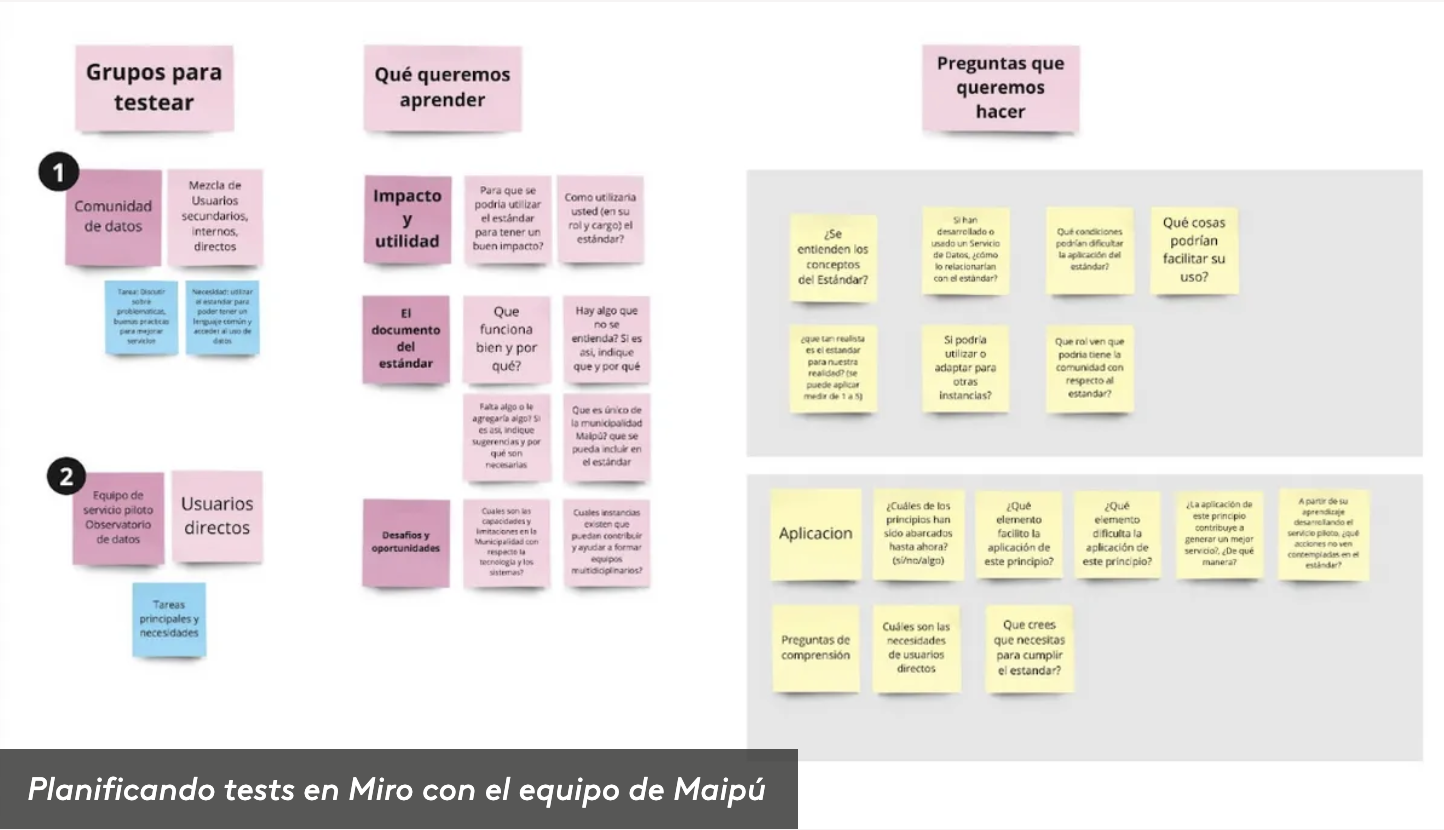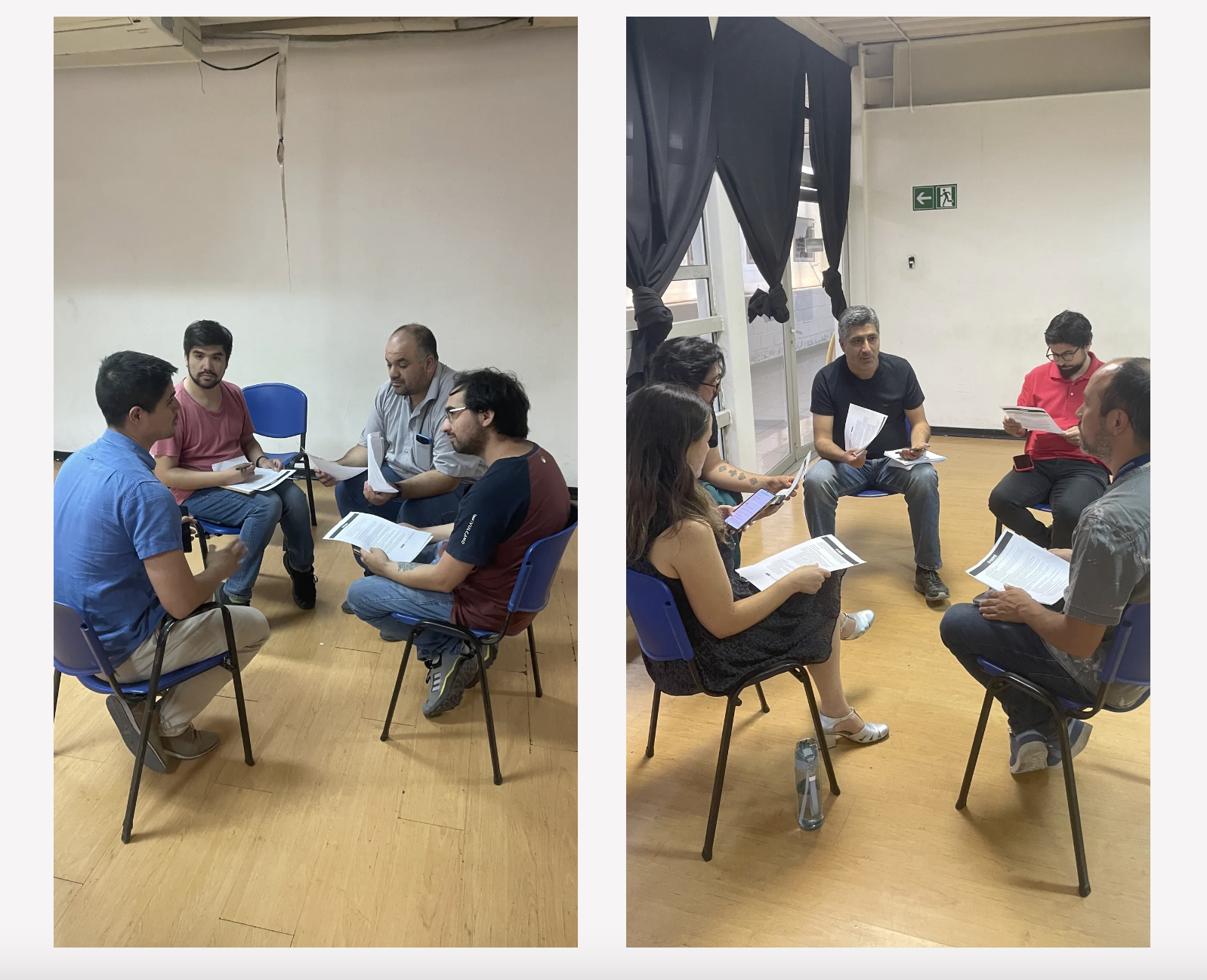Developing a Data Service Standard for Maipú - a framework
by Ignacia
This work was done through Public Digital

We have been working with the municipality of Maipú (Santiago, Chile) to develop a data service standard to guide and drive more agile and user-centric ways of working.
Maipú is only one of three cities in all of Latin America to develop and drive this type of standard. Specifically, their Data Service Standard was developed through the Bloomberg Philanthropies City Data Alliance, which works with mayors and cities across North, South and Central America to deepen their use of data to inform decisions, transform systems, understand impact and communicate results.
It was published and launched in May 2024, alongside the Municipality's Data Strategy.
In this blog post we will share in more detail the process in which the standard was created, which can serve as a baseline for other municipalities and cities.
1. Define the problems to be solved
Agree on what type of standard we are developing
It is important to start by defining what we mean by standards and the distinction between a data (technical) standard and a Data Service Standard. The word services is key. What is a data service? It is the means and the way to use data to achieve the user's final objective. Whether it is decision-making for officials within the municipality, or tracking information when making a complaint as a citizen.
A good data service standard should reflect the ideal state you want to reach (in terms of the service and ways of working) and it should be designed by putting the user at the centre.
Once agreed on the type of standards we were going to develop, we decided on 4 objectives that we wanted to achieve throughout the project:
- Identify the problems we are looking to solve with a standard.
- Define what a good data service is
- Define good practices to be promoted and their application in practice.
- Define users and develop a standard for them
Define the problems to be solved with the standard and the ways of working that we want to foster
We started the work by agreeing on why and for what purpose we wanted to develop a data service standard. We did this by identifying the problem that the municipality faces within the organisation when developing data services. These problems are what we want to solve with the standard.
Next, we identified the ways of working that we want to foster within the organisation. This helps us determine how we expect the teams to execute tasks to achieve a high-quality data service.
Finally, we determined the characteristics of a good data service. For the municipality of Maipú this meant that a data service should be:
- easy to use
- easy to access
- focused around the needs of its users
- clear on its purpose for citizens
- reliable and secure
- relevant to the municipality
- consistent and accurate in its data
Identify the users of the standard
To create a successful standard, it is important to identify who the standards answer to and what their needs are when designing and implementing data services.
We identified different types of users of the standard and specifically those who will use it directly to design data services:
- Direct users: Those who will be directly using the standard for the development of data services
- End users: Those who will benefit from the existence of the standard and its
- impact
- Internal users: Those who participate in the governance and development of the standard
- Secondary users: People who benefit from the existence of the standard but do not use it directly
In Maipú, it was established that the direct users of the standard are the internal staff and the external suppliers in charge of designing them [data services] for the municipality. For the internal staff, different roles were taken into account such as developers, managers, designers, among others, and their needs when designing the service.
With this information, we can develop the right content for this audience and identify potential users to test a draft.
Define the main points and create a first draft
Once the characteristics of a good data service and the ways of working that the municipality wants to promote were established, the team defined the main points of the standard.
As a starting point, we used examples from other countries and cities to inspire, analyse and identify what is relevant to the context of Maipú. Based on these references, the team voted and chose 10 principles of the standard and made adjustments given the municipality’s context.
For each point of the standard, they articulated why it is important for them and what the points mean in practice. They also added relevant tools and support guides for each point of the standard.

2. Test the standard with users
It is important to show the standard draft to potential users and test our assumptions of what we believe is a good data service and how it is designed.
To do this we need to identify who we can test with within the organisation - who is developing data services? Who has already developed a data service? Who has an interest in using data services?
Once the testing groups were identified, the standard team had to think about the things they wanted to learn from the testing exercise - in this case, it was to know if the content of the standard was understandable and if it applies to a data service. This helped us get ideas on how to test the standard and how to capture feedback for analysis once the testing was done.
Three testing sessions were facilitated with three groups of users. The standard was used to evaluate a service already launched and another which was still being developed. A session was also held with the data community of practice consisting of an introductory presentation and working tables to discuss the different points of the standard.
Members from the Maipú Standard team facilitated the sessions and documented the information for analysis.
Once the testing was done, we held a workshop to analyse the results of the sessions and identify which were the recurring themes that should be added or modified into the standard.
With the results of the testing sessions, the team integrated the feedback into the standard, iterated and generated a new version to publish.
We worked alongside the communications team to plan its publication and launch, encouraging the use of HTML and their website to make the standard more accessible, and easier to find and maintain over time.
An event was also held to launch the standard, inviting other municipalities, universities and other relevant actors in the sector to share the work and invite the whole community to develop or reuse these standards.

3. Assess and improve the standard over time
The work does not end with the publication of the standard. A good standard must continue to be tested with users and iterated over time to remain relevant. Its use by the organisation and service providers must be encouraged.
For this, it was necessary to develop a governance model. We used Emily Webber's Team Onion method to identify:
- The person responsible for the standard
- The standard team. The people working actively on the development and the implementation of the standard.
- Collaborators to assist in the implementation and evolution of the standard.
- Support people to increase the visibility and use of the standard.
Lastly, we created a plan to promote, iterate, and evaluate the standard. Some of the questions we asked ourselves were:
- How could we give visibility to the standard and encourage its use over time?
- How could we facilitate and help teams that are creating data services to use the standard?
- How could we track the use of the standard?
- How could we evaluate whether services comply with the standard?
- How often should we review the standard and update or improve it?
We hope that this methodology and framework will serve as a guide for other municipalities or cities seeking to develop simple, clear and usable standards for their users.
Once again we thank Natalie González, Roberto Puga, Francisco Medina, Teresa Olave, and Isidora Hernández who made up the Standard team from the municipality of Maipú.